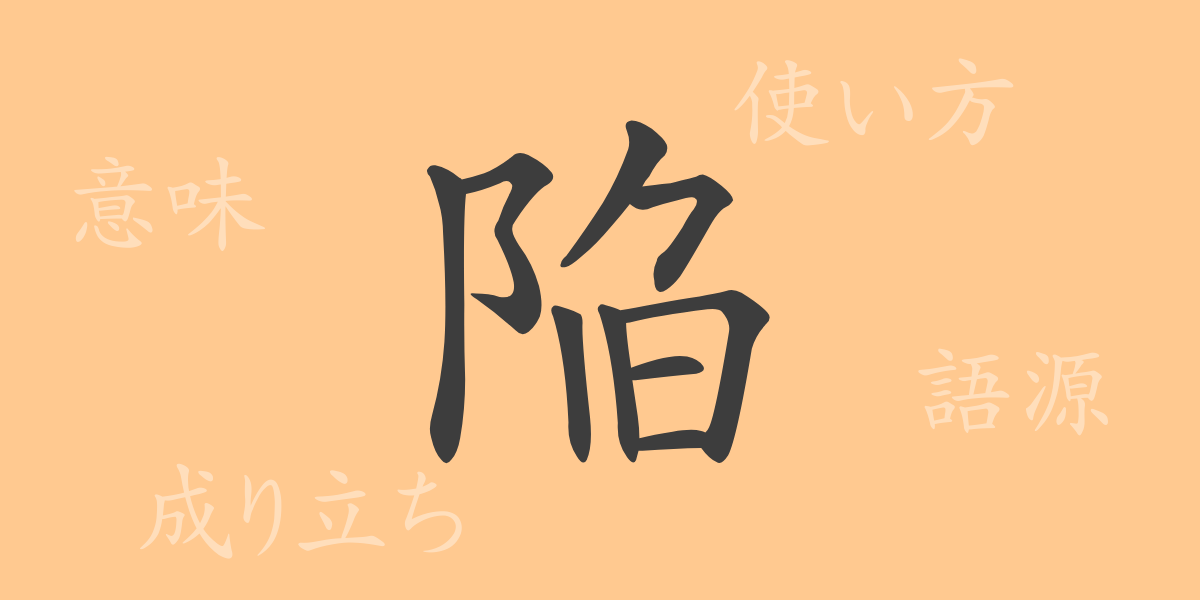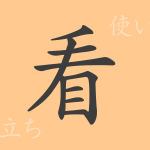The journey into the profound depths of written Japanese is enriched by its diverse kanji characters. Our focus today is the kanji “陥” (Kan), which is used in everyday life, literature, law, and many other fields in Japan. What does its unique shape signify, and how is it used? This article delves into the origins of “陥” (Kan), exploring its meanings, usages, and cultural background.
The Origins (Etymology) of 陥
The kanji “陥” (Kan) evolved from ancient Chinese characters. Originally, it was a pictograph representing the ground with a hole, which led to meanings such as “to fall into” or “to collapse.” Over time, it came to be used in words like “陥穽” (Kannsei), meaning traps or pitfalls.
The Meaning and Usage of 陥
The kanji “陥” (Kan) carries meanings such as “to fall into,” “to collapse,” or “to be caught in a trap.” It is used in various situations, from the literal “falling into a hole” to the more abstract “falling into a difficult situation.” In legal terms, it can also mean “to fall into crime,” indicating moral or ethical pitfalls.
How to Read 陥, Number of Strokes, and Radical
The kanji “陥” (Kan) has a relatively complex structure in Japanese.
- Reading: The on’yomi (Chinese reading) is “かん” (Kan), while the kun’yomi (Japanese reading) are “おちいる” (ochii-ru) and “おとしいれる” (otoshii-reru).
- Number of Strokes: It has a total of 10 strokes.
- Radical: The radical of “陥” (Kan) is “阜” (Kozatohenn), also known as the “hill” radical.
Idioms, Phrases, and Proverbs Using 陥 and Their Meanings
Idioms and phrases containing “陥” (Kan) play a significant role in the Japanese language. For example, “陥穽に落ちる” (Kannsei-ni-o-tiru) literally means falling into a pitfall, but figuratively it can mean falling into a plan or trap. “陥没” (Kannbotu) refers to the collapse of roads or ground, and “陥落” (Kannraku) originally meaning a castle falling, has come to mean the breakdown of an organization or system.
Summary on 陥
The kanji “陥” (Kan) enriches the Japanese language with both its form and meaning. Used in various contexts from physical pitfalls to life’s challenging situations, this character prompts us to be mindful in our choice of words. Mastering its usage in sentences allows for richer expressions. Understanding the meanings behind each kanji is key to deepening our understanding of the Japanese language.

























